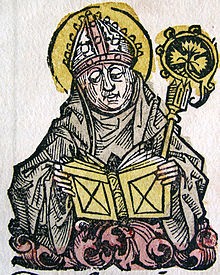The Parish of Whitton is situated in the Upper Thames Deanery. It was founded in 1934 by the Edmundite Fathers (Society of St Edmund). The first church was built in 1935 and the new church was consecrated in 1972.
IN 1934, the Edmundite order acquired a piece of property in Whitton known as “The Retreat.” Father Cheray and other Edmundites worked to convert existing structures on the property into a chapel for worship. “The Retreat” witnessed its first mass on September 24, 1934 offered by Father Cheray. Three years later, in 1937, a permanent church was erected at 213 Nelson Road. Masses were conducted uninterrupted until a German “oil bomb” destroyed the new church on October 29, 1940. In the aftermath of the destruction, Father Cheray and his parish desperately worked to erect a temporary church in an effort to restore normalcy. After the war, a larger permanent church was built and the original church was converted into a parish hall. The new church opened in 1963 and was consecrated in 1972. In 1988 the Edmundite Fathers left Whitton returning to the US, since when the parish has been in the care of the secular clergy of Westminster Diocese.
We meet in Christ’s name from many different backgrounds and circumstances to acknowledge our complete dependence on him and to receive from him the strength we need to serve him faithfully in the world.
Prayer of St Edmund
Lord, into Your hands and into the hands of Your Holy Angels I give and entrust this day my soul, my parents and relatives, my benefactors, my friends, my enemies, and all Christian people. Keep me, Lord, this day through the merits and prayers of the Blessed Virgin Mary and all Your Saints, from vices and wicked desires, from sins and the pains of hell. Enlighten my mind with the Holy Spirit and with your grace. Make me evermore obedient to Your commands, and never permit me to separate myself from You, who with the Father and the Holy Spirit lives and reigns forever and ever. Amen.
The Life of St Edmund

Edmund Rich had a personal sanctity that faithfully guided his dealings with the most powerful people on earth. He was unafraid to speak the truth, whether to the king of England or the pope, and he was often at odds with both.
St Edmund was born in Abingdon, on November 30, 1180 and studied at Oxford and in Paris. He was known for a faithfulness that matched his diligent study. While at Oxford, the Child Christ appeared to him while he was walking alone in the fields. In memory of what passed between him and Christ on that occasion, he used every night to sign his forehead with the words “Jesus of Nazareth”, a custom he recommended to others. Anxious to preserve purity of mind and body, Edmund made a vow of chastity, and as a pledge thereof he procured two rings; one he placed on the finger of Our Lady’s statue in St. Mary’s Oxford, the other he himself wore. He taught art and mathematics until he received a vision from his deceased mother, who encouraged him to study theology.
After receiving his doctorate in theology, he was ordained a priest and went on to teach theology and hold significant posts in the university’s administration. He was the first to teach Aristotle at Oxford, and took great interest in his students, especially if they were poor or sick. He then became canon and treasurer of Salisbury Cathedral.
Edmund dedicated almost all of his income to the poor or to the Church—he often fell into need himself because of his generosity, and his superiors scolded him for not saving more for his own support.
He was known as an eloquent speaker and effective preacher—miracles and conversions accompanied his speaking. He was also an expert in spirituality and constantly encouraged the faithful to pray. “A hundred thousand people are deceived by multiplying prayers,” he said once. “I would rather say five words devoutly with my heart, than 5,000 which my soul does not relish with affection and intelligence.”
He was known for his great self-discipline: under his clothes he wore sackcloth, and he slept only a few hours at night in order to spend time in prayer and meditation. On one occasion, he was observed levitating, consumed in prayer.
In 1233 he was named Archbishop of Canterbury (much against his wishes). He advised King Henry III and presided at the king’s confirmation of the Magna Carta in 1237. Notwithstanding the gentleness of his disposition, he firmly defended the rights of Church and State against the exactions and usurpations of Henry III. Edmund was at the centre of relations between Rome and England, and spoke truth to power on both sides. He admonished the king for having favourites in his court, and travelled to Rome to urge reforms in the Church.
Because he was so truthful and did not vary from what he saw as just and right, many people found him inconvenient. Unable to force the king to give over the control of vacant benefices, and determined not to countenance evil and injustice, Edmund saw he could no longer remain in England. Political movements forced Edmund’s resignation in 1240, and he moved to France and became a monk at Pontigny Abbey. He died later that year, on 16 November 1240, at Soisy-Bouy whilst travelling to Rome and was buried at Pontigny, and miracles at his grave were reported soon after his burial. His relics rest in the reliquary chapel in the Basilica of Pontigny. He was canonised in 1247. A few years later the first chapel dedicated to him, St Edmund’s Chapel, was consecrated in Dover by his friend, former student and chancellor, Richard of Chichester (making it the only chapel dedicated to one English saint by another). His feast is kept on November the 16th, the date of his death.
St Edmund, pray for us.